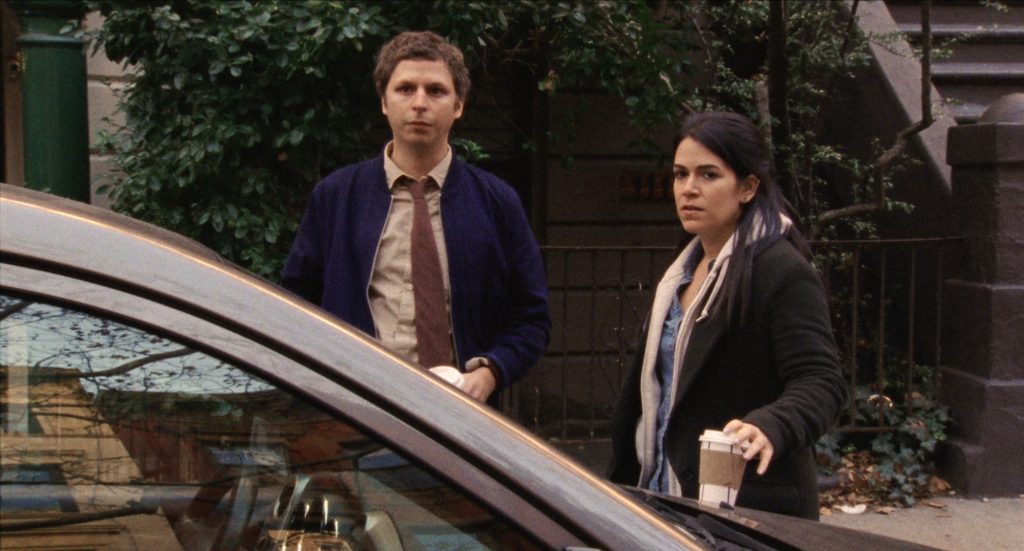Small Delights, by Darrell Tuffs
24 Jul
There’s a lot to love in Dustin Guy Defa’s 2017 drama, Person to Person. Immediately apparent becomes the film’s love for its space, its atmosphere, its characters. Like the very best of New York based filmmakers such as Woody Allen and Spike Lee, Defa sets a sophisticated-yet-somewhat-grimy filmic tone of concrete urbanism; a vibrant cinematic space cramped full of bustle and kinetic movement, all captured within considered framing and a vintage celluloid aesthetic, one keenly intent on reflective observation.
In the end, this film has no one core message, no one moral obligation with which to circulate a progressing narrative, but rather… to sound cliché, speaks from the heart. Its depicted stories are mostly mundane and mostly meaningless in any grand-gestured way; but a real human truth is found in its small moments, in its playful and often darkly comical events. For example, one of the film’s many lines of narrative consists of Bene (Bene Coopersmith), a passionate lover of jazz music and vinyl, attempting to decide whether his new patterned shirt flatters him or not. He battles with the decision, asking many friends and passers-by of their opinion throughout the day. This decision may seem vain or over-privileged, yet it adds so much for Bene’s character in terms of fulfilling the film’s wider hypothesis.
Another line of narrative follows Phil (Michael Cere) and Claire (Abbi Jacobson) as they follow an unfolding murder plot for a local newspaper. Phil seems to thrive on the sketchy ethics and invasion of privacy that comes with reporting, whereas Claire constantly doubts the morality of the work she carries out. What’s important here isn’t their case itself, but rather their different visions of the city and their local space; their conflicting moral beliefs within a constantly shifting relationship.
The film neither pities nor praises its characters, but rather delights in them. The film delights in the peculiar nuances of each person, allowing them to make mistakes with consequences, but no judgment. There are two occasions in which light pursuits occur throughout the city; the pursuers angrily proclaiming to break the legs of their targets. Yet, when these chases meet their climax, the conclusion is often a meaningful conversation about life, about regret, and about forgiveness. Person to Person, above all, is about conversations, about connecting with natural friends and natural enemies by stopping and listening to them.
Thus, the highlight of the film is its performances. Almost all the performers create astonishingly real characters, ones that are constantly developing and changing as personalities, ones that often say what they want, but do what they need. New York also plays a great role as a book, of which, is opened by the film, explored page by page, and read with close detail and emotional desire. What’s more is that these unconnected narratives can also be surprisingly humorous. Using observational and often droll humour, the film adds an extra layer of delightfulness by allowing us to laugh at its characters, while also realising they may not be all that different to us ourselves.
As a great spectacle or encompassing narrative, Person to Person doesn’t fly high, and barely even leaves the ground. But, as a study of modern life in a commonly harsh and confusing world, the film strongly forgives the moral inaccuracies of its characters by delighting in the small faults and blunders that make living in this world so very peculiar, yet so very special.




No comments yet